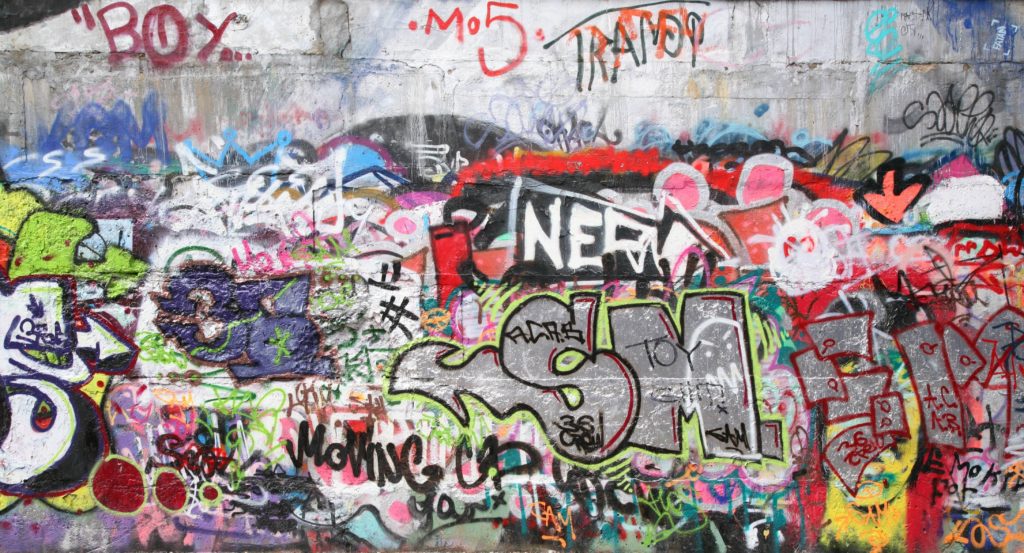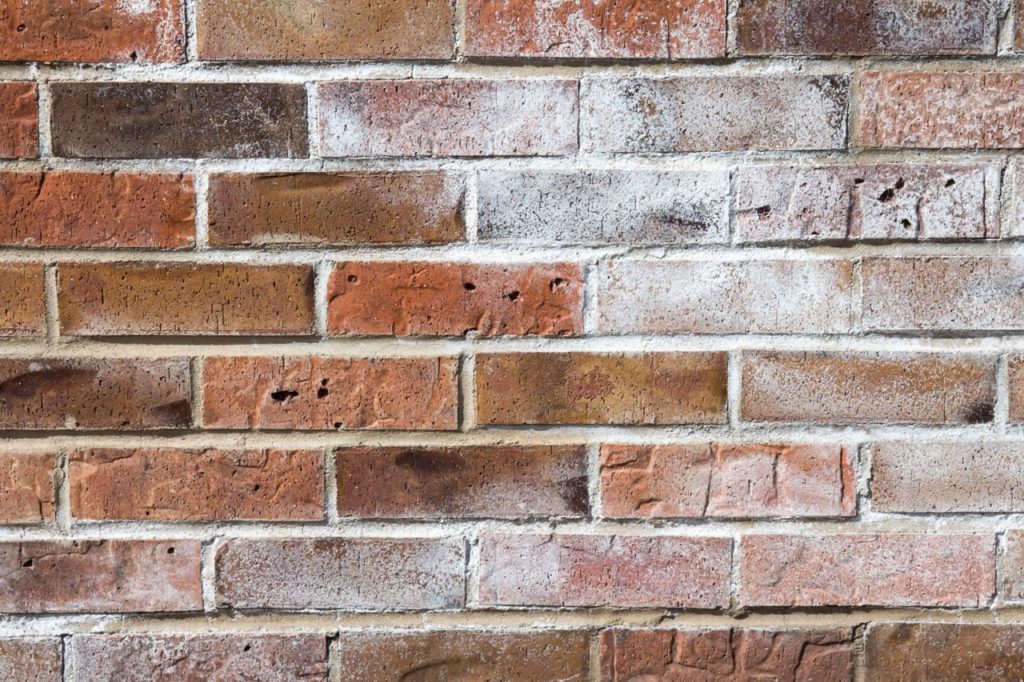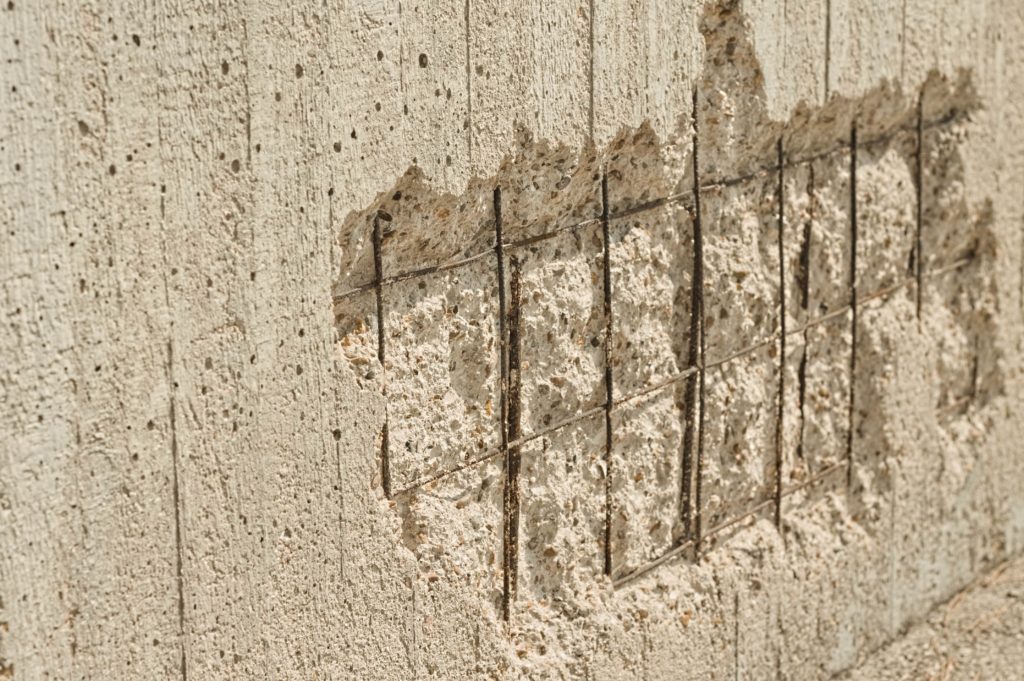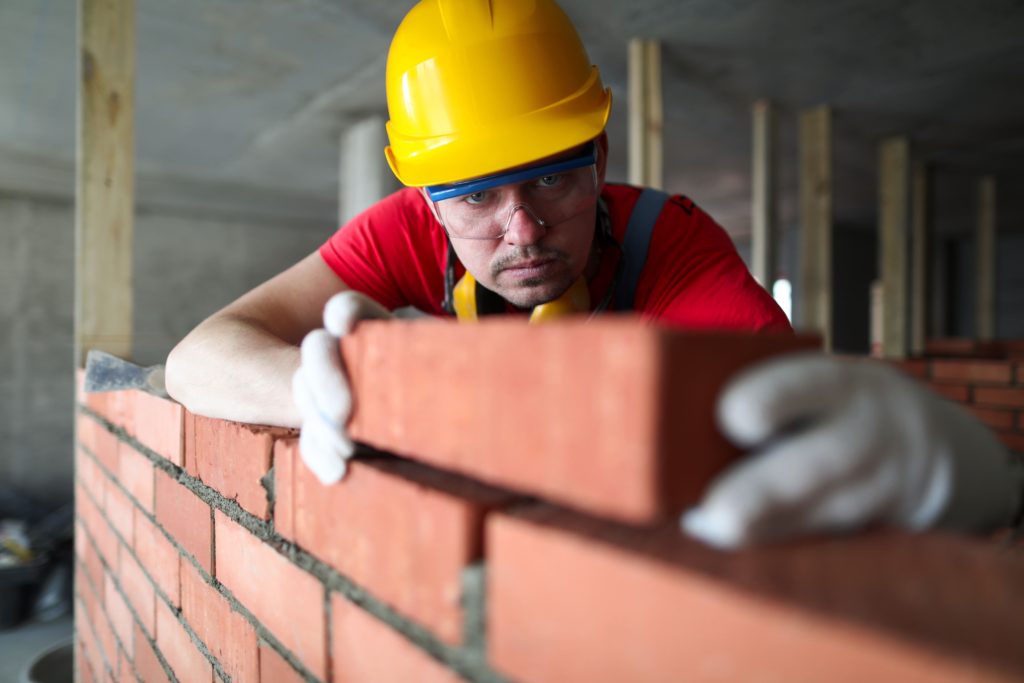Words and Photos: Julia Pineda-Santiago, Rainguard Pro
Finding the right coating for masonry can be quite difficult. It’s important to consider not only the aesthetic needed, but also the resistances needed in the application. Some of the most prevalent coatings used today are anti-graffiti coatings, mineral and efflorescence blockers, and waterproofers. These coatings not only play a role in keeping away deterioration and degradation of masonry, from foot and tire traffic, UV rays, chemicals, graffiti, and other impurities, they can also be used to help enhance the aesthetic of the masonry.
Graffiti damage, as we are all aware, results from unauthorized artists tagging their names, affiliations, and mottos using a variety of markers or spray paints. While it ruins the aesthetics of masonry, and can represent reprehensible images and ideas, it can also ruin the masonry surfaces and cost hundreds to thousands of dollars in labor and repair. It’s imperative that all of these problems are avoided. Fortunately, it’s possible to handle this aggravating and damaging circumstance with the use of several products on the market.
There are coatings that can be applied that act as a barrier between the masonry surface and graffiti. Specifically there are two in nature: non-sacrificial coatings and sacrificial coatings. Knowing the difference between the two will help you choose the best one for your needs. Sacrificial anti-graffiti coatings are almost unnoticeable and aren’t permanent meaning a new layer of coating must be applied after each graffiti removal. Non-sacrificial anti-graffiti coatings are available in flat almost invisible finishes as well as a variety of attractive appearances such as gloss, satin, and matte finishes. They allow numerous graffiti removals without a new layer of coating needed after each removal. Depending on the base material of the coating (acrylic, polyurethane, urethane, etc.) these non-sacrificial coatings are durable enough to protect the surface for many years. Since graffiti tends to take place in areas with lots of human contact, it’s important to choose a solution that is not only safe for the applicator and environment, but also for the end user.

Damage to masonry caused by efflorescence and mineral stains are an issue that arises when moisture penetrates the surface of your substrate and when the water evaporates, it brings to the surface salt and mineral deposits that were inside. When evaporation happens, these deposits find points of discharge back out onto the surface leaving discoloration, typically a white chalky appearance. These stains are unsightly in appearance but can also cause surface erosion, and like graffiti damage, removal and repair can cost hundreds to thousands of dollars in labor and materials.
Usually efflorescence can be removed with a masonry cleaner, but what do you do when moisture is constantly in contact with the masonry? This typically happens when you have below grade masonry, planters, or a waterproofing membrane fails. In these types of applications, efflorescence maintenance is constant and unending. The good news is that there are sealer products available that prevent minerals, efflorescence, and alkali from reaching the surface before the stains start to form. These sealers are typically clear with a natural looking finish and resistant to hot-tire pickup. When looking for an efflorescence blocker, it’s important to find one that is water-based and non-toxic, to prevent any harmful chemicals from affecting the soil touching the masonry.
Another important thing to note is that efflorescence and mineral stains can develop during the new construction process. This is not necessarily something that most are aware of and prepared to treat after construction is completed. What we’ve discovered from clients is that there is often a lengthy gap in time between when the masonry is put up by masons and when the finishing crews get to task priming, sealing, or painting. The efflorescence and mineral stains can cause serious delay to a project when they develop between construction and finishing. There are two ways of addressing this. One, if the efflorescence is already present, use a cleaning product specifically designed to remove efflorescence that can be used immediately before the finishing process. This can then be followed with a coating of efflorescence and mineral blocker to prevent efflorescence from appearing again. Two, a deviation from standard can be put into play where this type of coating is applied immediately after the masonry construction is complete. This will prevent efflorescence from forming in the first place, and will help to prevent any delays in the project.

Other water damage that causes major issues in masonry range from mold and mildew, to spalling and cracking, to actual masonry displacement. These are damages that start in the thousands and often surpass the tens of thousands in repair costs. And these are, for all of the severity, avoidable by the use of a proper water repellent coating.
Primarily there are two coatings that are the most popular solution against water damage. One being an opaque elastomeric coating, and the other being a clear invisible penetrating coating. Using a clear, penetrating water repellent is ideal for applications where changes to the look and texture of the masonry are unwanted. Since a penetrating water repellent coating doesn’t form a film, there is no risk of yellowing, cracking, or peeling over time– even in direct sunlight. In colder climates, a penetrating water repellent protects the masonry from absorbed water freezing and expanding in the pores of the surface which can cause cracking or spalling.

The elastomeric coating provides even more comprehensive protection. It is a film-forming and flexible coating that not only repels water, but also bridges hairline cracks. The flexibility of this coating allows it to move with the structure underneath as it expands and contracts due to temperature changes and structure movement. These coatings are high-build and are available in clear, white, and sometimes tintable bases to create a unique finish.
When choosing what type of sealer to use for your project, consider all the features of a coating that add up to providing maximum durability for your masonry while still adhering to the strictest V.O.C. laws in your area. With the right masonry coatings, your project will benefit from additional protection and added longevity.
About The Author
Rainguard Brands is an independently owned and operated business known internationally for its commitment to creating innovative and solution-based products. Through our portfolio of brands – Rainguard Water Sealers, RainguardPro, IsoFree, Micro-Seal, and VandlGuard – we create architectural and industrial coatings that are eco-friendly and safe for the applicator, end-user, and environment. We provide film coatings and sealers, waterrepellents, thermal barriers, floor care coatings, color coatings, anti-graffiti solutions, mural guard coatings, and more. Through this we’ve provided coating solutions for projects throughout the world ranging from Walmart buildings to the Athens Olympic Stadium. Visit us to learn more at RainguardPro.com.
